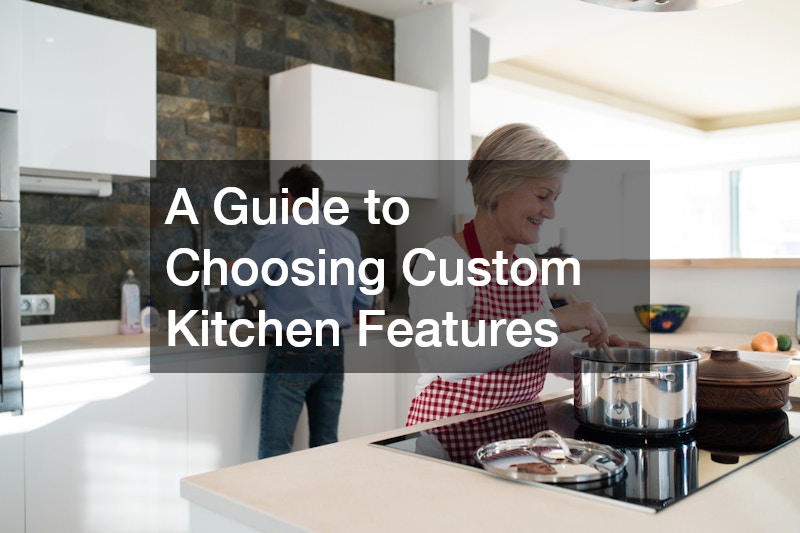Designing a new custom kitchen is one of the most exciting parts of home renovation. The kitchen is often the heart of the home where meals are prepared, conversations are had, and memories are made.
With so many options available, it can be overwhelming to decide which features are worth investing in. Opting for a custom kitchen gives homeowners the flexibility to tailor their space to suit individual needs, tastes and routines.
Assessing Your Lifestyle Needs
Before choosing finishes or layouts, consider how you use your kitchen daily. Families who cook together will benefit from wide benchtops and multiple prep areas. If you entertain often, an open-plan design with an island or breakfast bar might be ideal. Alternatively, those who prioritise organisation and functionality may prefer hidden storage compartments and designated zones for appliances.
Think about what works in your current kitchen and what doesn’t. Are there cluttered benchtops, poorly lit corners or hard-to-reach cabinets? Take note of these issues and use them to inform your new layout. Tailoring your kitchen to your lifestyle ensures it won’t just look impressive but will also improve daily convenience.
Choosing the Right Materials
Material selection plays a major role in the performance and longevity of your kitchen. While aesthetics are important, materials should also be durable and easy to maintain. Benchtops, for instance, are exposed to heat, moisture and heavy use. Popular options include stone, engineered quartz and solid surfaces, all of which offer a good balance of style and resilience.
For cabinetry, consider finishes that are both attractive and resistant to wear. Laminates and vinyl wraps offer affordable yet versatile choices, while timber veneers provide a natural look with added warmth. Splashbacks should also be easy to clean and resistant to stains. Glass, tiles and stainless steel are practical and visually appealing options.
Flooring deserves equal attention. Kitchen floors endure heavy foot traffic, so it’s important to choose a hard-wearing surface. Tiles, hybrid floors and vinyl planks are popular for their water resistance and ease of cleaning.
Maximising Storage Options
One of the main benefits of a c ustom kitchenis the ability to optimise storage. With clever planning, even a small kitchen can feel spacious and efficient. Start by analysing what you store and how frequently you access it. Design cabinetry that accommodates your habits, whether that means deep drawers for pots and pans or vertical dividers for baking trays.
Pull-out pantries, corner carousels and soft-close drawers can make a big difference in day-to-day use. Overhead cabinets can extend to the ceiling to avoid wasted space and reduce dust collection. Consider built-in solutions such as spice racks, utensil organisers and pull-out bins to keep the kitchen tidy and functional.
Don’t overlook the value of open shelving for frequently used items or decorative pieces. Just be mindful that open shelves require regular dusting and a certain level of visual order to avoid looking cluttered.
Prioritising Lighting and Power
Lighting is a key factor in kitchen design, but is often overlooked during planning. A well-lit custom kitchen not only improves visibility and safety but also enhances the overall atmosphere. Aim for a combination of task lighting, ambient lighting and accent lighting.
Task lighting is essential in areas like benchtops, sinks and cooktops. Under-cabinet lighting works well for this purpose. Ambient lighting, such as ceiling-mounted fixtures or pendant lights, provides general illumination. Accent lighting can be used to highlight design features or create mood, such as strip lights along the kickboard or inside glass cabinets.
Personalising with Finishes and Fixtures
The finishing touches of your kitchen help define its character and reflect your style. Cabinet handles, tapware and sink selections may seem minor, but they contribute significantly to the overall look and feel. Choose finishes that complement your broader interior design, whether that’s modern, classic, coastal or industrial.
Brushed nickel, matte black and brass are currently trending in tapware and handles, adding a contemporary touch. Sinks come in a variety of styles, including under-mount, top-mount and farmhouse designs, each offering different practical and visual benefits.
Designing a custom kitchen offers the unique advantage of creating a space that truly aligns with your needs and style. By carefully considering your lifestyle, choosing quality materials, maximising storage, incorporating smart lighting and adding personalised finishes, you can achieve a kitchen that is both functional and beautiful. The key is thoughtful planning and attention to detail. When done right, your kitchen will not only serve as a practical workspace but also as a welcoming centrepiece in your home for years to come.
.
